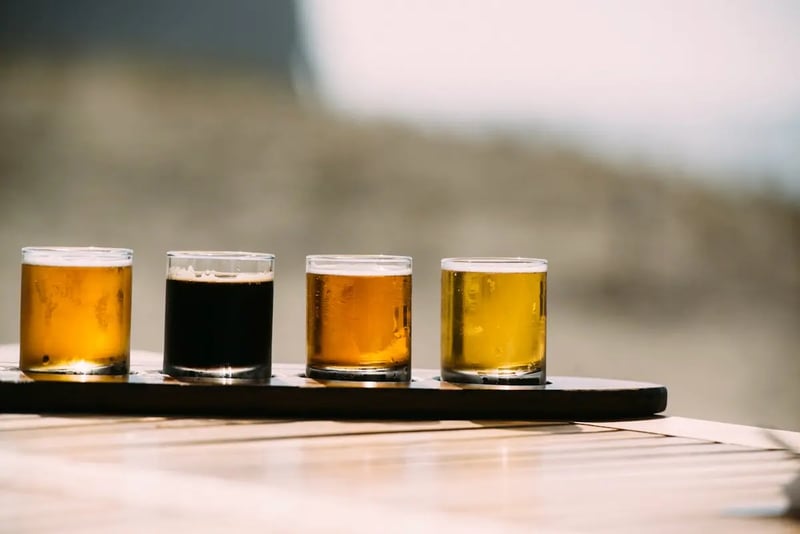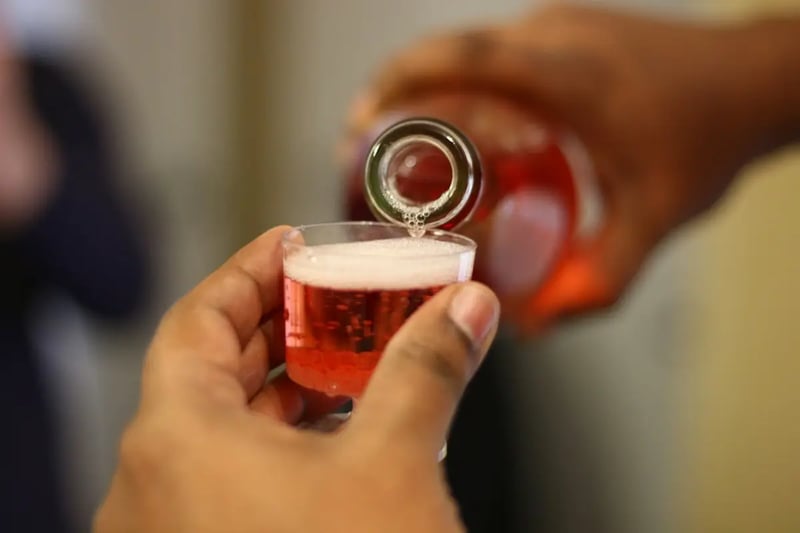
What Is a Standard Drink? A Beginner-Friendly Conversion Guide
Understanding the idea of a standard drink is the fastest way to enter honest data into the Realistic EtG Calculator and avoid last-minute panic before an alcohol screen. While the phrase appears everywhere—from rehab paperwork to court orders—it often feels vague. How much beer is one standard drink? Does a large wine glass count as one or two? How do you handle homemade cocktails? This guide walks you through the concept step by step, translating confusing labels and pours into numbers you can trust.
Why Standard Drinks Matter for EtG Planning
An EtG test looks for ethyl glucuronide, a metabolite your body produces after ingesting alcohol. The calculator converts your total alcohol intake into an estimated detection window, but its accuracy depends on precise inputs. A mismatch of even one or two drinks can add several hours to your projected clearance time. Treating every drink as a single unit is risky; a pint of craft beer or a generous mixed drink often hides more alcohol than you expect. Standard drinks remove that guesswork by anchoring all beverages to the same amount of pure ethanol.
In the United States, one standard drink contains 14 grams (0.6 fluid ounces) of pure alcohol. Many health agencies—including the CDC and NIAAA—use this definition to simplify recommendations and risk assessments.
Standard Drink Calculator: The Basic Conversion Formula
At its core, the standard drink calculation relies on three variables: the volume of the beverage, the alcohol by volume (ABV), and a constant representing ethanol density. This alcohol unit conversion formula works for any type of alcoholic beverage.
Standard Drink Formula Calculator
Metric Version (Milliliters):
Standard Drinks = (Volume (ml) × ABV × 0.789) ÷ 10Imperial Version (Fluid Ounces):
Standard Drinks = (Volume (fl oz) × ABV × 0.6)Formula Parameters:
Volume (ml)is the amount of liquid you consumed. Convert fluid ounces to milliliters by multiplying by 29.57.ABVis the alcohol percentage listed on the label (e.g., 5% beer = 0.05).0.789is the density of pure ethanol in grams per milliliter.0.6is the simplified constant for imperial calculations.- Dividing by 10 (metric) translates the result into the 14-gram U.S. standard.
Both approaches deliver the same answer; choose the one that matches your measuring tools. This standard drink calculator formula works for beer, wine, spirits, and mixed drinks.
Quick Reference Table for Everyday Beverages
To help you eyeball common servings, compare your drink against the examples below. If you pour more or less than the reference size, scale the number accordingly.
| Beverage Type | Typical Serving | ABV Example | Approx. Standard Drinks |
|---|---|---|---|
| Light beer | 12 fl oz (355 ml) | 4% | 0.8 |
| Craft IPA | 16 fl oz (473 ml) | 7% | 1.9 |
| Table wine | 5 fl oz (148 ml) | 12% | 1.2 |
| Sparkling wine | 5 fl oz (148 ml) | 11% | 1.0 |
| 80-proof whiskey | 1.5 fl oz (44 ml) | 40% | 1.0 |
| 100-proof bourbon | 1.5 fl oz (44 ml) | 50% | 1.3 |
| Ready-to-drink canned cocktail | 12 fl oz (355 ml) | 9% | 1.6 |
| Frozen margarita (restaurant glass) | 10 fl oz (296 ml) | 13% | 2.0 |
Notice how some casual pours quickly exceed the “one drink” assumption. A single pint of craft beer or a tall bartender-style cocktail can count as nearly two standard drinks, which extends your EtG detection window.
Step-by-Step Example: Converting a Night Out
Imagine you met friends for dinner and ordered the following:
- 16 fl oz hazy IPA at 6.5% ABV
- 5 fl oz glass of red wine at 14% ABV
- 2 fl oz shot of tequila at 40% ABV
Let’s convert each beverage using the simplified formula:
- Beer:
(16 × 0.065 × 0.6) ≈ 0.62standard drinks per ounce? Wait—remember the formula applies to the entire serving:16 × 0.065 × 0.6 = 0.624. That is already the total standard drinks for the pint. - Wine:
5 × 0.14 × 0.6 = 0.42 - Tequila:
2 × 0.40 × 0.6 = 0.48
Add everything together:
Total Standard Drinks ≈ 0.624 + 0.42 + 0.48 = 1.524It feels surprising—three beverages translate into roughly 1.5 standard drinks—because ABV varies. If the beer had been a stronger double IPA at 9% or the wine served in a 9 fl oz glass, the total could easily surpass three standard drinks. Re-run the calculations any time your portions change.
Visualizing Different Glass Sizes

A useful mental trick is to look at the width and shape of your glass. Restaurants often list a 5 fl oz pour, but home glassware can be deceiving. A large red wine glass filled to the widest point may hold 8 to 10 fl oz. If you refill without measuring, you might accidentally double your intake. Keeping a simple measuring cup nearby or using shot jiggers when mixing cocktails makes your data far more reliable.
Handling Mixed Drinks and Homemade Recipes
Mixed drinks combine multiple ingredients, and the alcohol volume hides within the spirits. Break down the recipe into pure alcohol components:
- List the amount of each spirit in fluid ounces.
- Multiply the volume by the spirit’s ABV percentage.
- Add the results to get total ethanol volume.
- Apply the standard drink formula using the ethanol total.
Example: Classic Margarita
- 2 fl oz tequila (40% ABV)
- 1 fl oz orange liqueur (30% ABV)
- 1 fl oz lime juice (0% ABV)
Tequila contribution = 2 × 0.40 × 0.6 = 0.48
Orange liqueur contribution = 1 × 0.30 × 0.6 = 0.18
Total standard drinks = 0.66If you serve the margarita over ice in a tall glass and top it with sweetened lime mix, the extra volume does not add more alcohol, but your brain might still interpret the drink as “just one.” When bartenders use higher proof tequila or add floaters, repeat the math with those numbers.
Scaling for Different Countries
The 14-gram standard applies to the United States, but other countries use different baselines:
- Canada: 13.45 grams
- Australia: 10 grams
- United Kingdom: 8 grams (called “units”)
If you travel or read international health advice, match the calculator to the correct regional standard. Multiply your U.S. standard drinks by the ratio of 14 grams to the local definition to stay accurate.
Tips for Recording Drinks in Real Time
- Pre-fill a tracker. Jot down default recipes or your favorite beers so you can log totals quickly.
- Measure the first pour. Once you know that your wine glass filled to the ridge equals 6 fl oz, you can use that shorthand all night.
- Estimate high when uncertain. If a cocktail might include a double shot, err on the higher side to build buffer time into your plan.
- Use the calculator immediately after each session. Fresh memory reduces under-reporting.
Staying disciplined with measurement creates peace of mind. The EtG calculator becomes a tool for planning rather than a source of anxiety.
Common Misunderstandings to Avoid
- “Beer equals one drink.” True only for 12 fl oz at 5% ABV. Craft beers often double that.
- “Wine glasses hold five ounces.” Many stemware designs encourage larger pours.
- “Shots are always standard.” A 2 fl oz pour of 100-proof liquor almost equals 1.6 standard drinks.
- “Mixers dilute alcohol.” Juice or soda lowers perceived strength but not the ethanol amount. Only water stretches a drink without changing alcohol content.
Recognizing these myths helps you stay honest with yourself and with any accountability partners.
Connecting the Dots with the EtG Calculator
Once you total your standard drinks, head back to the home page calculator and enter the number under Standard Drinks Consumed. The tool combines your intake with body weight, biological sex, and cutoff level to estimate a realistic clearance timeline. To deepen your understanding, check out the supporting articles:
These resources explain how metabolism, testing sensitivity, and mathematical models influence your result. Together they form a complete playbook for sober planning.
Frequently Asked Questions
How do I log drinks when tasting multiple samples?
Add the sample volumes together. Five 2 fl oz wine tastings at 13% ABV equal 5 × (2 × 0.13 × 0.6) ≈ 0.78 standard drinks.
Do zero-proof or “non-alcoholic” beers count?
Most non-alcoholic beers contain less than 0.5% ABV. Drinking several in a short period may still produce a tiny amount of alcohol, but the total typically stays below 0.1 standard drinks. If you consume many bottles, track them for completeness.
What about homemade infusions or punches?
Use the original spirit’s ABV unless you dilute heavily. For punch bowls, calculate the total ethanol from all spirits, divide by total servings, and log each cup accordingly.
Can I switch units to grams directly?
Yes. Multiply standard drinks by 14 to get grams of pure alcohol, or divide grams by 14 to return to standard drinks. Keeping both numbers handy helps when reading lab reports or international guidelines.
Standard Drink Conversion Chart & Quick Reference
Alcohol Serving Size Chart
For quick reference, here’s a standard drink conversion chart for common beverages:
| Beverage Type | Typical Serving | ABV | Standard Drinks | Quick Tips |
|---|---|---|---|---|
| Regular Beer | 12 oz (355 ml) | 5% | 1.0 | Standard bottle = 1 drink |
| Craft Beer/IPA | 16 oz (473 ml) | 7% | 1.9 | Nearly 2 drinks per pint |
| Light Beer | 12 oz (355 ml) | 4% | 0.8 | Less than 1 standard drink |
| Table Wine | 5 oz (148 ml) | 12% | 1.2 | Restaurant pour varies |
| Red Wine | 6 oz (177 ml) | 13% | 1.5 | Large glasses = 1.5+ drinks |
| Champagne | 5 oz (148 ml) | 12% | 1.2 | Same as table wine |
| Vodka/Whiskey | 1.5 oz (44 ml) | 40% | 1.0 | Standard shot = 1 drink |
| 100-proof Spirits | 1.5 oz (44 ml) | 50% | 1.3 | Higher proof = more drinks |
| Margarita (restaurant) | 8 oz (237 ml) | 13% | 1.6 | Often contains 2+ shots |
How to Measure Alcohol Content
For Beer:
- Check the can/bottle for ABV percentage
- Standard 12 oz = 1 drink at 5% ABV
- Craft beers often range 6-9% ABV
For Wine:
- Restaurant pours typically 5-6 oz
- Home pours can be 8-10 oz in large glasses
- Always check the ABV on the bottle
For Spirits:
- Standard shot = 1.5 oz at 40% ABV (80 proof)
- “Doubles” = 3 oz = 2 standard drinks
- Higher proof (100+%) increases standard drinks proportionally
Final Reminders
- Measuring accurately is a form of self-care. It reduces stress by turning vague guesses into clear numbers.
- Honest tracking makes the EtG calculator a coaching tool rather than a fear trigger.
- When in doubt, overestimate slightly and add buffer time before scheduled tests.
- If alcohol use feels hard to manage, visit our Get Help page for confidential support resources.
